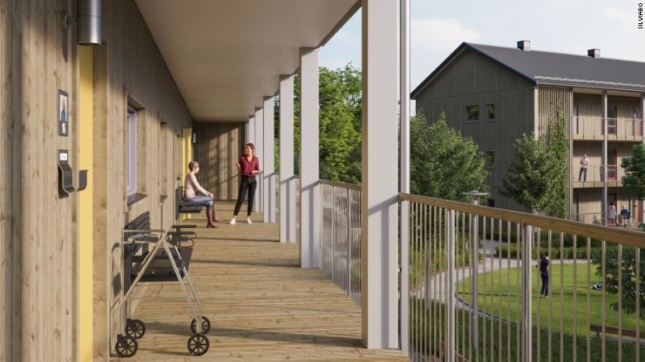IKEA and Queen Silvia of Sweden are teaming up to rethink housing the elderly. The project, called SilviaBo, is an offshoot of the furniture giant’s affordable housing arm, BoKLok, and extends its same principles of wooden, prefab architecture for the masses to the world’s aging population.
These days, architects and designers are being challenged to create inclusive spaces that not only offer shelter for the elderly but also promote healing and are physically accessible to people with a range of mobility and emotional energies. When choosing retirement housing, many families have anxiety over the cost of living and the often lack of social support or physical care staff available at lower-cost institutions. BoKlok and SilviaBo aim to squash that fear and claim to be at the forefront of a movement that addresses sustainability, economics, and physical well-being in elderly care.

The flatpack-style SilviaBo homes are manufactured in partnership with another Swedish company, construction firm Skanska. The original units that have been in production since the late 90s still serve as the base for the new customized homes. They are assembled as prefab parts in a factory and delivered to the construction site where they are set up as one unit. Made mostly of wood, the homes feature a minimal, clean design. Currently, the units are available via BoKlok in Sweden, Finland, Norway, and the UK.
The result of BoKlok’s work is a cost-effective and environmentally sensitive model for the future of retirees. The company claims that only 1 percent of its materials go to landfill and that it has a carbon footprint of less than half of a standard building project. Sensitive design choices derived from the most recent research on dementia include kitchen appliances with physical buttons rather than digital screens to bathrooms without mirrors or dark flooring, two factors deemed aggravating to individuals suffering from dementia.











